The region's biggest land mammals
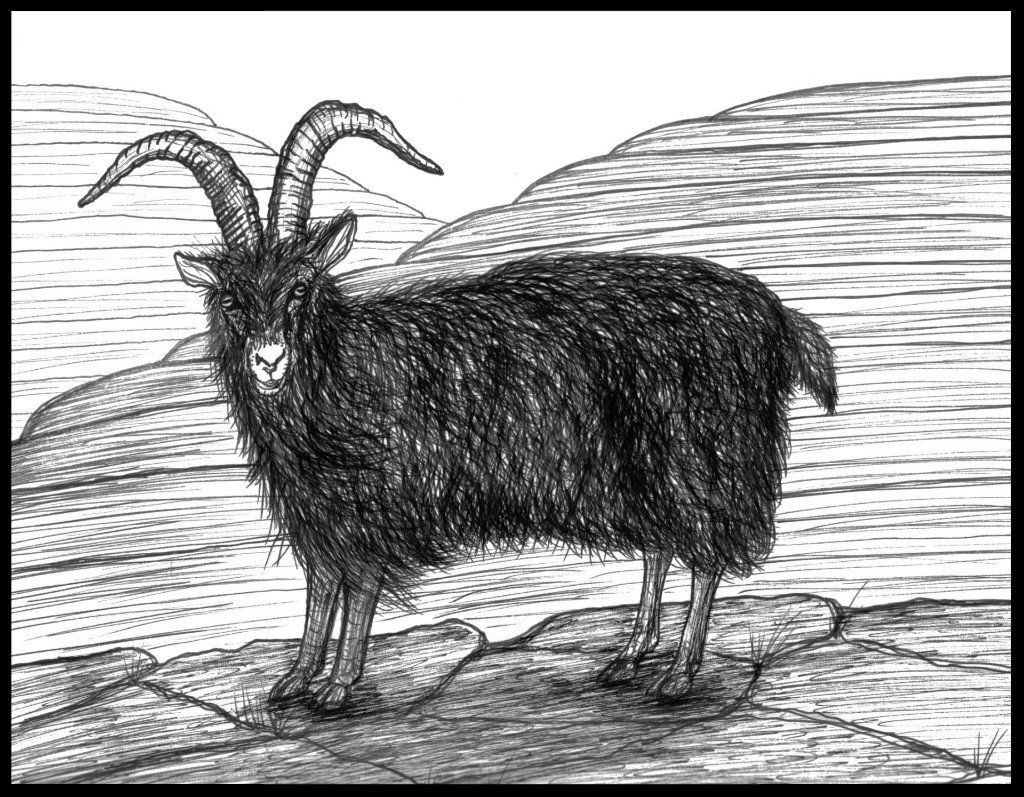
ARTIODACTYLA –
EVEN-HOOFED ANIMALS
Red Deer ( Cervus elaphus
) and the Old
Irish Goat ( Hibernia antiqua capra)
are the
only big, native land mammals which survive in the wild in Ireland. They are
both herbivores and are members of an order of even-hoofed animals called Artiodactyla
.
The countryside was more dramatic in the past when charismatic animals such as
reindeer ( Rangifer
), giant Irish deer
( Megaloceros
), wolf ( Canis lupus
), European brown bear ( Ursus arctos
), boar ( Sus scrofa
) and others also roamed. All
of these creatures are now extinct in Ireland on account of climate change
and/or persecution by man and/or habitat destruction.
Red Deer probably became extinct in the Burren in the middle of the 1800s in a wider context of population collapse in Ireland and Europe due to a big rise in human pressure on the natural world.
Just like the Red Deer, the Old Irish Goat’s distribution in
Ireland is now limited. We are very fortunate in the Burren to host this
spectacular mammal with its long beard and hair, oversized sideburns and
extravagant horns.
The Old Irish Goat was the only goat breed in Ireland up to 1900. It roams in the Burren wild with about 1,000 other ex-domestic goats.
The rare Old Irish Goat is thus being hybridised. A conservation plan is badly
needed in order to safeguard the bloodline. A campaign is afoot to try to get Rare Breed Status for the animal. The Status would mean official protection of the animal. The number of Old Irish Goats in
the Burren is extremely provisional and may number as little as 100.
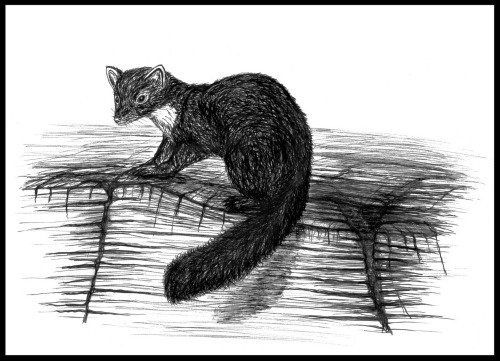
CARNIVORA
– CAT AND DOG-LIKE MAMMALS
Six members of the carnivora
order
are evident in the Burren –
badger ( Meles meles
), pine marten
( Martes martes
), stoat ( Mustela ermine
), fox ( Vulpes vulpes
), otter ( Lutra lutra
) and the invasive mink ( Mustela vison
).

The pine marten ( Martes
martes
) is very elusive creature. I have seen martens only 3 times in my 15
years on the Burren. The martens are beautiful mammals with a dark brown fur
coat and a creamy-yellow throat patch. They have semi-retractable claws which
allows them to lead arboreal lifestyles! The pine marten is known as cat crainn
in Gaelic (tree cat).
The stoat ( Mustela ermine
) is known
as the mighty midget of Irish land mammals. It can kill creatures 5 times its
size and drag them distances of up one kilometre. It has re-invented the field
boundaries of the Burren as wild life route ways as it likes to travel along
the tops of the dry stone walls. In another example of glorious re-invention,
on occasion stoats in the Burren build their nests within prehistoric cairns –
a house of life within a house of death!
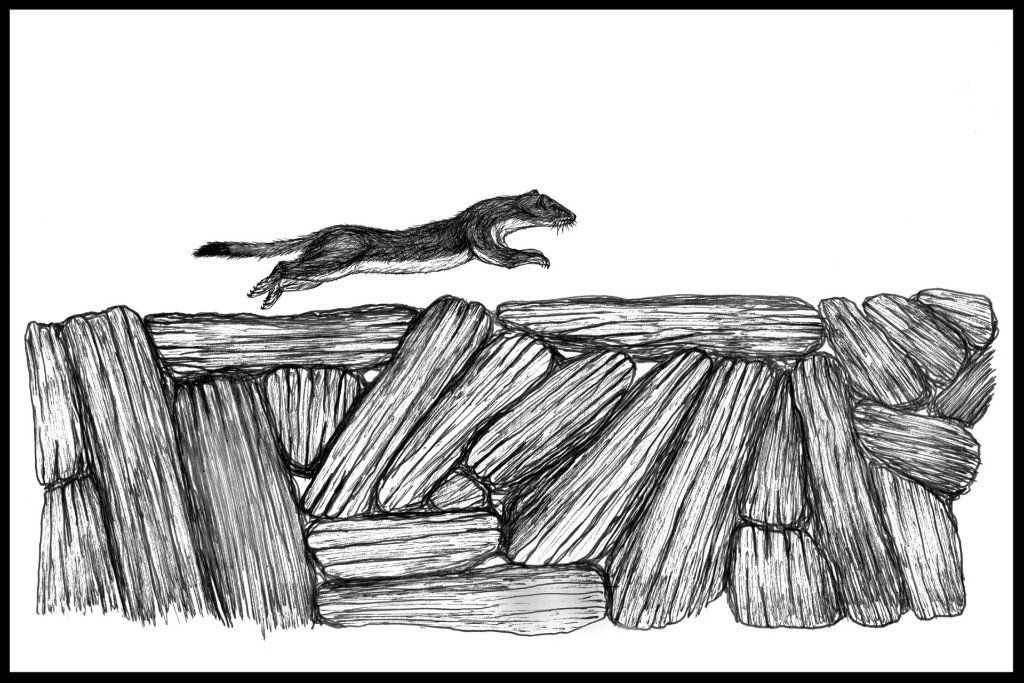
The fox (Vulpes vulpes) is the only member of the wild dog family in Ireland. It is also one of the few land mammals one is likely to see in daylight in the Burren. Foxes are beautiful to observe with their brown coat colour, pointed ears, “black socks” and long, bushy tail. Young hares and rabbits form part of its diet.
In karst landscapes such as the Burren, most of the water seeps into the limestone through small channels on the limestone surface and streams disappear into sinks or swallow holes. Therefore, there are not too many surface water bodies in the region. The otter ( Lutra lutra ) is thus mainly found on the coast, in the west of the Burren. It lives in burrows and is primarily a fish-eater.The otter preys on the American mink ( Mustela vison ) which is no bad thing. Bones of mink have been found in otter droppings. The mink is an invasive species having escaped from fur “farms”.
It hasn’t caused colossal ecological damage but is regarded as a pest as it preys on water fowl and domestic fowl.
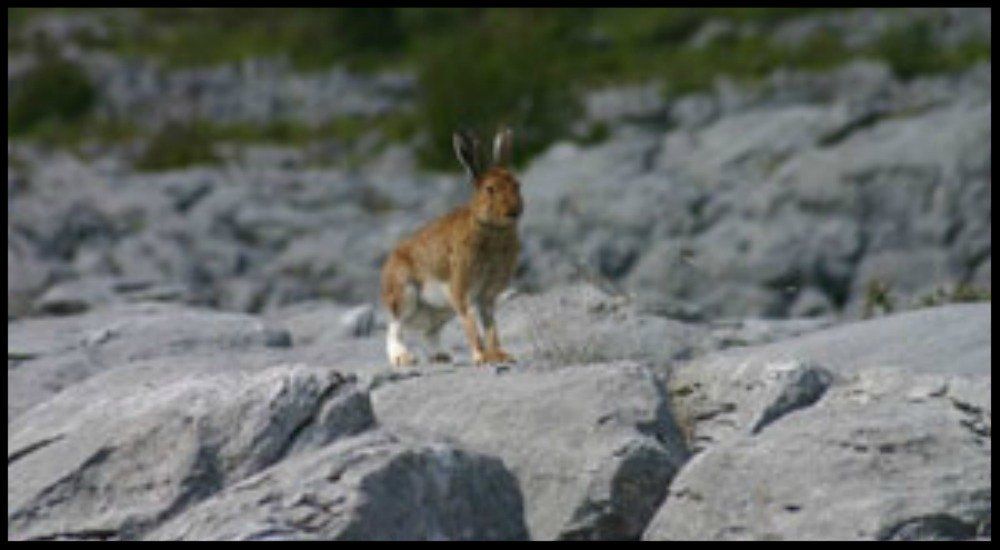
LAGAMORPHA –
DISTINGUISHED BY DOUBLE INCISOR TEETH
Hares ( Lepus timidus
) are
abundant especially in the Burren hills where most of the limestone pavement areas
are concentrated. The “cragland”, as it is known locally, has plenty of rough
vegetation. Hares use the vegetation to escape the attention of their predators
such as foxes.
They have also a plentiful supply of food in the uplands in the form of
grasses, sedges and ling/common heather ( Calluna
vulgaris
). Most of our land mammals are nocturnal. However, it is quite
common to see the hare in the Burren in daylight.
Rabbit numbers in the Burren and Ireland are only a fraction now of what they were in the 1950s. In that decade, they were inflicted with the wild rabbit control virus Myxomatosis. The “bunny” has thankfully proved resilient enough. The highest concentration is in sandy areas along the north-west coastline of the region, most notably in the Fanore sand dunes. Rabbits ( Oryctolagus cuniculus ) live in extensive burrows.
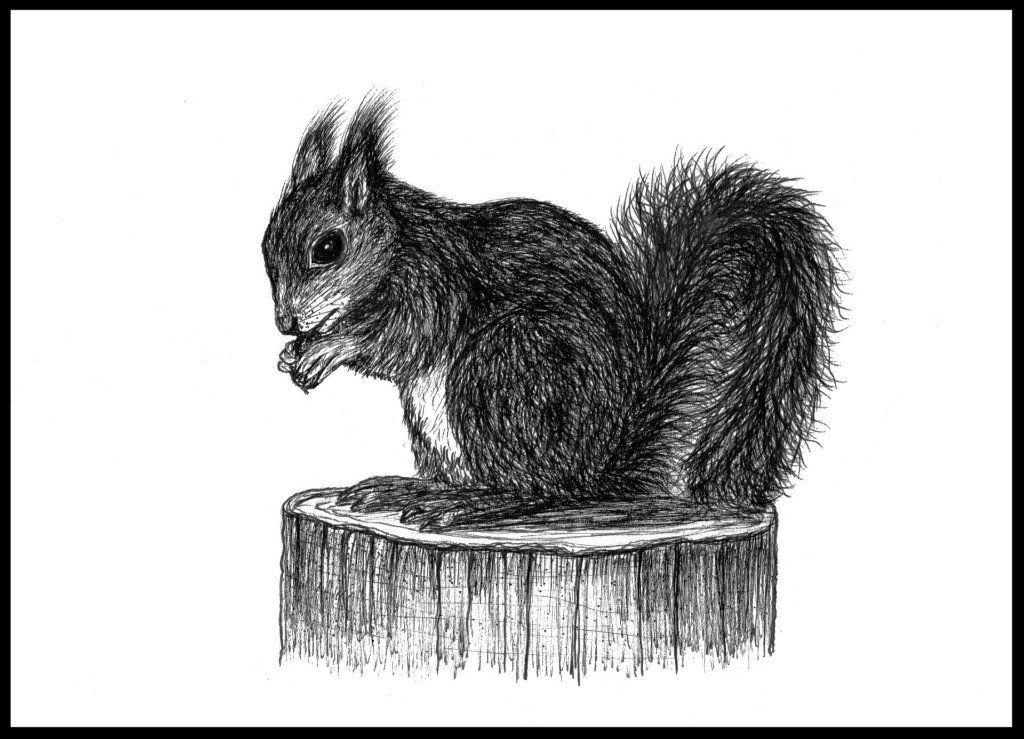
RODENTIA – RODENTS
The red squirrel ( Sciurus vulgaris ) is the largest and easily the most attractive member of the rodent family in the Burren. It can be found in the hazel scrub in the region. Thankfully, the animal is not suffering the decline here that it is experiencing in the east of Ireland where the invasive grey squirrel ( Sciurus carolinensis ) is out-competing it.
CONCLUSION
The Burren is rightly lauded at an international level for its geology, flora and archaeology. However, the fauna is rich and varied also. This is particularly so in the hills where low-intensity farming is practiced. The absence of suburbanisation and coniferisation also help to explain why the Burren uplands are a hot spot for wild life fans.
REFERENCES
The Natural History of the Burren.
Gordon Darcy. Immel Publishing Limited. First published 1992 .
Exploring Irish Mammals.
Tom
Hayden and Rory Harrington. Town House and Country House. First published 2000.
ILLUSTRATIONS
Courtesy of Carles Casasin. Carles is from Barcelona, a proud Catalan and a sublime artist. He lives in the Burren, in Ballyvaughan. Visca Carles!
PHOTO
Courtesy of Emma Glanville.



